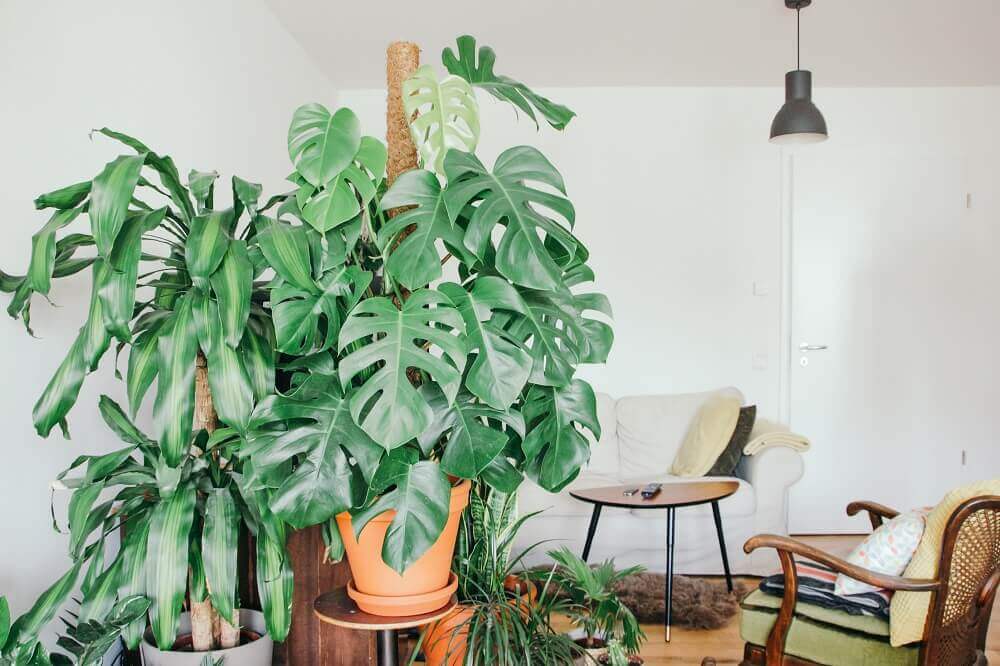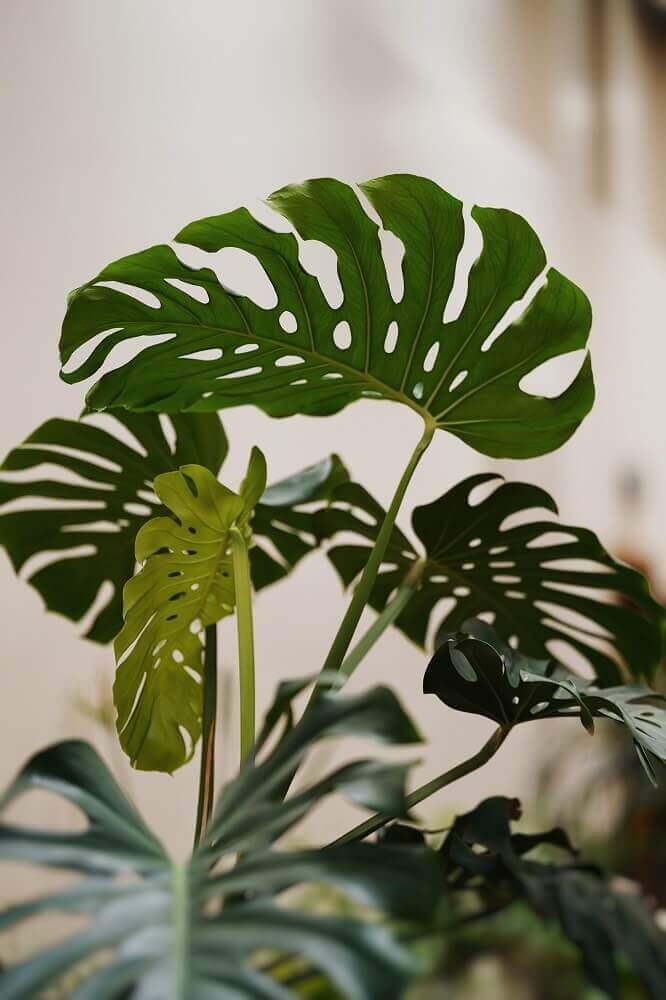
Monstera Deliciosa is an eminent houseplant and for many, it signifies life and dignity. It comes from the Arum family and thrives in tropical forests. Growing a Monstera plant is quite easy, so much so that even a new plant parent can grow it. Just provide it with its basic needs, and see your Monstera Deliciosa proliferate quickly.
Since the growth is spontaneous, as a responsible plant parent, you must understand the importance of repotting the plant; because, if you want your plant to grow healthier, you have to arrange a generous space for it.
But how will you know when it’s time to repot your Monstera? This can get a bit difficult, especially if you’re a beginner.
Your Monstera plant needs repotting once every two years and spring is the best season to do that. Poor water retention, inconsistent growth, overgrown roots, etc. are some of the indications that tell the need for repotting. In this article, we will talk about the significance of these signs and explain how you could recognize them. Let us help you find out if your Monstera has outgrown.
Table of Contents
Why Do You Need to Repot Your Monstera?
Before we discuss the topic further, we have to clear that Monstera Deliciosa is not a high-maintenance houseplant. You will be happy to learn that the adorable plant does not require frequent repotting. You can do it once in a couple of years.
However, as a plant parent, you might want to see your Monstera look healthier and thrive freely. Hence you need to assess whether the plant needs a new pot to grow instinctively. Remember, when enjoying a suitable condition, a Monstera Deliciosa plant can grow rapidly. A constantly growing plant requires adequate water and nutrients to meet its physiological needs.
To ensure optimum growth, you need to provide it with the right support and growing conditions. Repotting can be the solution to many problems, as a small space may restrict the plant to grow more aerial roots and leaves.
Hence, it is recommended to give your Monstera plant a somewhat larger pot. A larger pot will give the plant more space and encouragement to spread its roots. A small pot can restrict the movement of constantly growing roots. In such a condition, roots tend to get rootbound.
Also, houseplants like Monstera Deliciosa often suffer from pest and bacterial infestation. Vitamin and mineral deficiency is also a common problem in Monstera plants. Repotting with fresh and nutritious soil can solve such issues and let your luscious friend grow healthier.
Signs Your Monstera Has Outgrown
Houseplants like Monstera Deliciosa can enjoy a long life if cared for properly. If you want the plant to grow to the desired size, you have to repot it on time. Assessing the signs of an outgrown Monstera is very important, as this will help you take immediate action. Here are a few major signs your Monstera has outgrown and it wants a new pot to grow.
-
If You Have Not Repotted it for More than Two Years:
If your Monstera has matured, you need to report it once in a couple of years. On the other hand, if your Monstera is a younger one, you will have to consider repotting more frequently. Repotting once in two years is a good practice, as this will allow you to refresh the soil and check roots.
Repotting can also help older Monstera plants to live longer. If you have not transplanted for a long period, you can assume that your Monstera is struggling for space,
-
If the Roots Are Sneaking Through the Drainage Holes:
A young Monstera Deliciosa plant can grow at a rapid pace and you might have to consider repotting much before then you thought. To find the signs, you can check the drainage holes. If you find roots are sneaking out through the holes, you can think about a new pot for your Monstera.
If the roots are getting out of the pot through the drainage holes, allocate a slightly larger pot. This will allow the roots of your Monstera to breathe freely. Remember, repotting will encourage the plant to enhance its size. If you do not want the plant to grow large, trim the roots and put the plant in the same pot.
Related: Monstera Aerial Roots: What Are They And What To Do With Them?
-
If the Top Soil Looks Dry and Dusty:
This is another important sign you need to be careful about. If you find that the topsoil in the pot looks exhausted as if it is used up, you can consider repotting. This clearly tells your Monstera has outgrown and it wants repotting.
To be confident, you can press a finger into the soil from the top. If the soil has been exhausted, it will release water from below. Once the Monstera plant has outgrown, it will struggle to thrive in used-up soil. It is better to replace the soil once a year. This will boost nutrient supply and keep the plant happy and healthy for a long time.
Related: What Is The Best Soil For Monstera Deliciosa?
-
If The Soil Fails To Retain Much Water:
You can encounter the sign during watering. If you find that the soil in the pot is struggling to retain water, you can consider it as a sign for repotting your Monstera. When watering the plant, you will observe that the water is penetrating through the drainage holes.
Now it is time to confirm whether your Monstera has outgrown. The next thing you have to do is pull the plant out of the pot and inspect its roots. You are likely to find your Monstera in a rootbound condition. In such a condition, the plant tends to fill the pot with constantly growing roots leaving minimum room for the soil. When the level of soil decreases, water can easily penetrate through the drainage holes.
In such a condition, the best way save the plant is to repot it into a little bit larger pot. Be gentle when untangling the roots and never forget to add some fresh soil into the pot.
-
If Your Monstera Has Stopped Growing:
If you find that your Monstera has stopped growing despite enjoying utmost care and support, you can consider it a sign for repotting. A Monstera Deliciosa plant can stop growing new leaves for many reasons like poor watering, lack of nutrients, low humidity, etc. Hence, it is very important to find out the actual cause behind the problem.
Checking the roots can help you find the real troublemaker. If you find the roots tangled inside the pot, your plant is ready for repotting. Immediate transplantation of the plant in a slightly larger pot will help it to start growing again.
Related: Can You Propagate A Monstera Plant Without A Node?
How to Repot an Outgrown Monstera Deliciosa?

Repotting an outgrown Monstera plant is going to be an easy task and you can do this with some household items. All you need to execute the task are a slightly larger new pot, fresh soil, sanitized shears, and a clean surface. Here are some steps you can follow to make the job easier.
-
Choosing The Right Pot:
If your Monstera plant has already outgrown, it is better to go with a slightly larger pot. Make sure you have not bought an extra-large pot thinking it will help the plant to grow spontaneously. An extra-large pot can damage the roots over time. Never forget to clean and disinfect the pot before you put soil in it.
-
Adding Fresh Soil:
Now it is time to add new and fresh soil into the pot. Make sure you are using well-drained soil with an excellent ratio of moss, compost, coco fiber, etc. Monstera Deliciosa is a self-supportive plant. Hence, there is no need to add bark to the soil. Now, pour the mixture into the pot leaving some space for the plant.
-
Handle with Care:
Never try to repot your beloved Monstera in a hurry. Be gentle when dealing with the houseplant. If you find the soil of the old pot dry and hard, water it to make it mild. Once, the soil becomes soft, hold the stem and pull the plant out of the pot gently.
-
It is Time to Repot:
Now, your Monstera is ready to be settled in a new pot. When placing the plant in the new pot, keep it in the middle. This will allow the roots to spread in all directions. Fill the pot with the soil mixture and pat the surface to make it even.
Conclusion
It is very important to repot an outgrown Monstera plant. Repotting will not only help the plant grow spontaneously but will also keep it happy and healthy. Identifying the signs that tell when you should consider buying a new pot is also an important task. Outgrown and tangled roots can invite many problems for the plant if you ignore them for a long period. We hope our article will make the task of repotting easier for you. Thank you for your time and patience. We invite you to join the discussion and share your experience with us.
Reference List

Gardening is my greatest passion, and I love indoor and outdoor plants so much. Plants make me happy, and I enjoy taking care of them. I know keeping plants happy and healthy is a challenging task. But as a plant enthusiast, I do my best to help my little friends thrive. I am here to help people who nurture similar points of view about plants with my little knowledge and experience.
